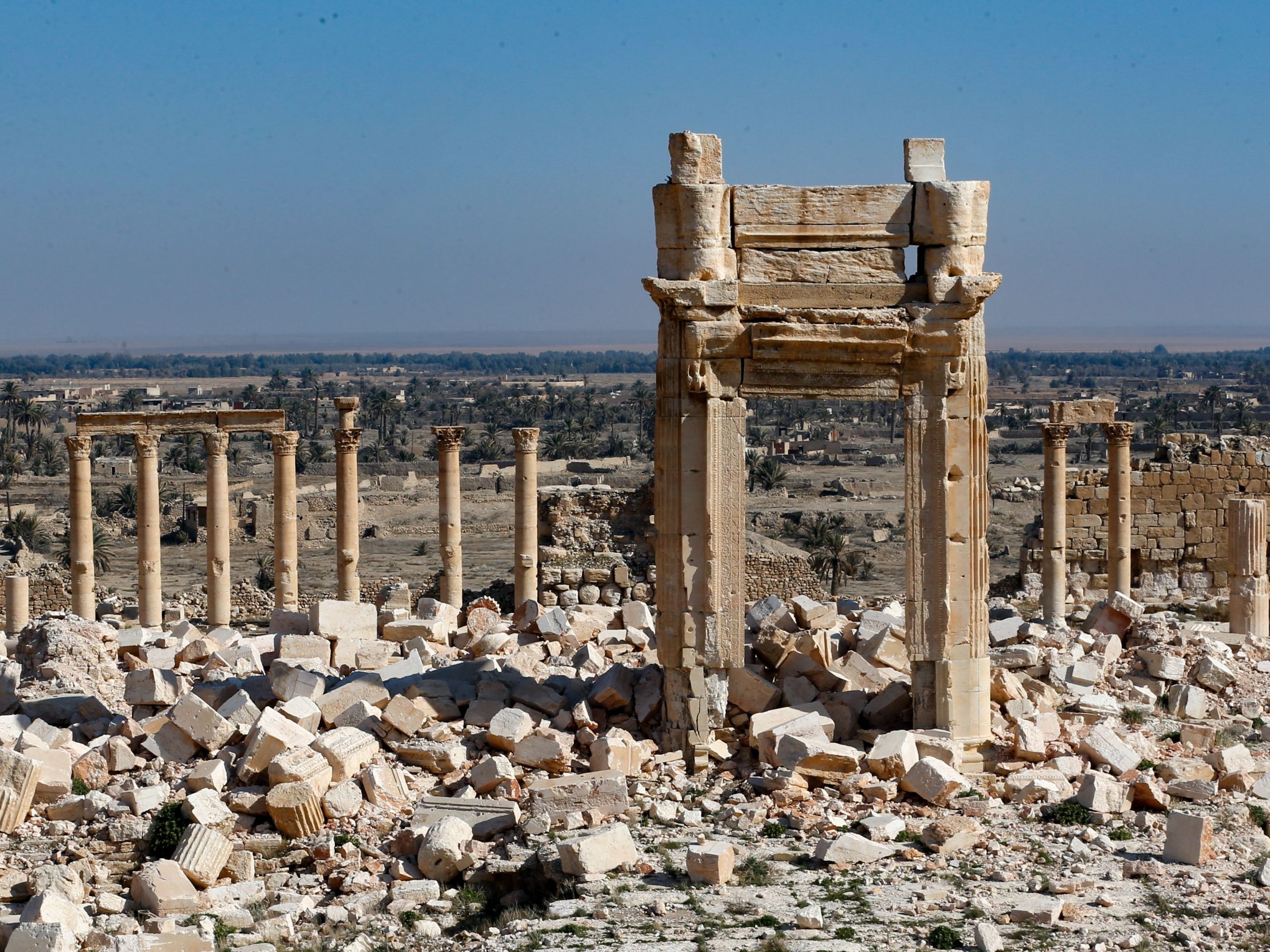Archaeologists have made an urgent call to preserve the remains of an “exceptional” ancient temple that suffered extensive damage at the hands of the Islamic State militant group (ISIS).
The Temple of Bel is located within the ancient city of Palmyra, a UNESCO World Heritage site situated in the middle of the Syrian Desert, next to an oasis offering plentiful water.
The earliest history of the settlement dates back to prehistoric times, but it reached its economic and political peak during the initial three centuries of the first millennium, when it had evolved into a city surrounded by walls.
The Temple of Bel, founded in the first century, is the main sanctuary of Palmyra. Consecrated to the Mesopotamian god Bel, it was built on top of a small tell—an artificial mound formed by superimposed archaeological remains—dated to the third to second millennium B.C. The temple represents a remarkable synthesis of ancient Near Eastern and Greek styles.
LOUAI BESHARA/AFP via Getty Images
The construction of the temple was completed in the second century. But it was later converted into a church in the fifth century, as Christianity spread in the region, and subsequently into a mosque during the Islamic period. The temple’s enormous courtyard even served as a residential shelter where people lived for centuries.
In 2015, however, the temple was largely destroyed by ISIS explosives amid the Syrian civil war when the jihadist group was in control of the area. This bombing caused great damage to the temple but did not destroy the structure entirely. The arrival of ISIS also forced the community living in the Palmyra area to flee. Out of a population that once numbered around 40,000, only 2,000 had returned by 2022.
Specialists who visited the site after its 2016 liberation from ISIS by the Syrian army confirmed that although the walls of the cella (the inner temple chamber) had collapsed, along with the columns of the surrounding porticos, some elements, including a large western gate and the foundations of the temple walls, remained intact. (Palmyra fell back under the control of ISIS later in 2016 but was recaptured by the army in 2017.)
Now, in a paper published in the Bulletin of the American Society of Overseas Research, archaeologists Maamoun Abdulkarim and Jacques Seigne say there is an urgent need to intervene in the temple’s preservation and to facilitate the return of the Palmyra population to ensure the site’s continued existence.
“This paper emphasizes the critical need to carry out emergency work to halt the deterioration of this significant World Heritage Site,” the paper’s authors wrote.
“The destruction wrought by ISIS while it was in control of the area in 2015 and again in 2016 had a disastrous effect on the World Heritage Site and its local residential community,” they went on. “The tragedy took two forms: firstly, in the physical damage to the archaeological and architectural fabric of the ancient city of Palmyra, and secondly, through the disruption of civic society as the population fled.”
The authors are against fully reconstructing the temple. In their view, this would be an “impossibility” because of the extent of the damage and not preferable for financial reasons and other factors. But they said it is “equally clear” that the monument cannot be left as it is. Instead, the authors argue for selective rehabilitation of certain elements with the aim of preserving the significant architectural features.
“First, we have a duty to secure the standing remains of the monument, ensuring that the damage wrought by the explosion does not lead to further collapse,” the authors wrote. “The area around the [monumental] gate should be cleared and cleaned as a preliminary requirement ahead of its consolidation and anchored securely with temporary buttressing or shoring.
“Second, we also need to record, gather, and conserve the fragments of the temple that were scattered by the blast. In not doing so, we risk losing those pieces to robbery, to natural processes of erosion, or to unwitting damage.”
The researchers also argue that any substantive action to restore monuments in Palmyra cannot realistically take place until the local population has returned.
“This community is crucial to the success and sustainability of any strategic planning, not only because they are a source of labor and practical expertise, but also due to their collective memory and ownership of the site. They are a part of its story,” the authors wrote.
“Their contribution will be necessary for rebuilding Palmyra’s infrastructure and services, and they will play a fundamental role in reviving the Palmyrene oasis, particularly through maintaining the water system and palm and olive trees that have always given life to the settlement…. The current condition of the oasis and its trees have also been negatively impacted by the residents’ inability to return to their city. Without people to care for, protect, and revive it, the oasis is drying.”
“It is now the responsibility of the national authorities, with the assistance of international partners, to establish a plan to reunite the local population with their city so that they can help in the rehabilitation of the monuments that were damaged or destroyed during the war,” the authors said.
Do you have a tip on a science story that Newsweek should be covering? Do you have a question about archaeology? Let us know via science@newsweek.com.
Uncommon Knowledge
Newsweek is committed to challenging conventional wisdom and finding connections in the search for common ground.
Newsweek is committed to challenging conventional wisdom and finding connections in the search for common ground.
